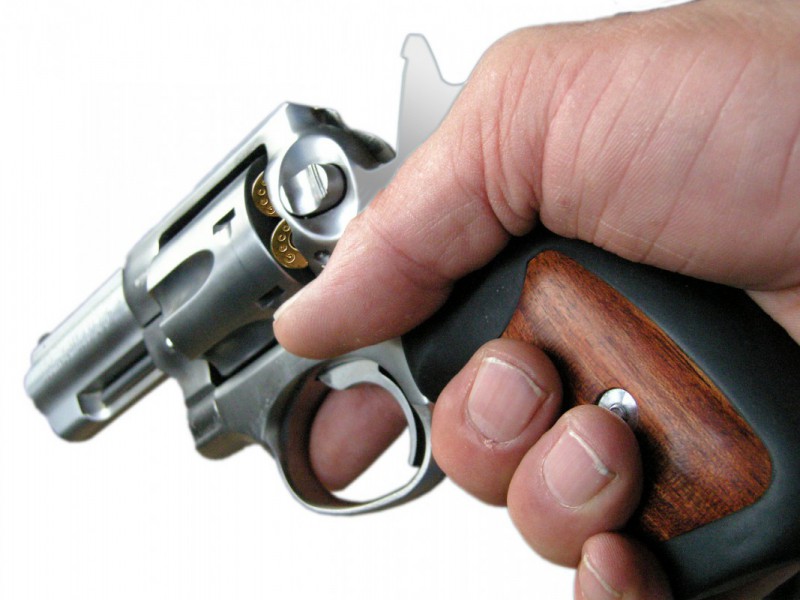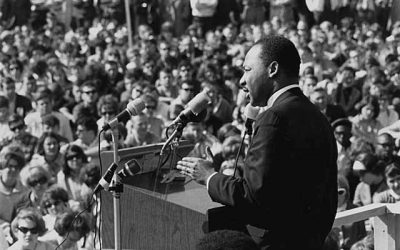Care to revisit, post-Sept. 11, the issue of racial profiling?
“Civil rights activist” Al Sharpton, during the Harlem presidential debate between Al Gore and Bill Bradley, asked the first question. “Many in our community have to live in fear of both the cops and the robbers,” said Sharpton. “We’re asking what concrete steps would you make if you were elected president, to deal with police brutality and racial profiling without increasing crime. How would you keep crime down, but at the same time confront the problem of police brutality and racial profiling?”
Now most police chiefs deny engaging in “racial profiling,” the illegal practice of stopping and questioning solely based upon race. For example, Los Angeles Police Chief Bernard Parks said, “We’re not using just race. It’s got to be race, plus other indicators, so that won’t happen.”
Then came Sept. 11, 2001, when 19 “Middle-Eastern-looking” men hijacked four commercial planes. Six of the 19 apparently slipped into the United States illegally. And, of the remaining 13, three allowed their visas to expire and stayed. The government tells us that Middle Eastern “terrorist cells” operate in the United States with perhaps thousands of so-called “sleepers” worldwide, living assimilated lives in some 50 countries while awaiting the signal to strike.
Of the FBI’s recently revealed list of the 22 “most-wanted terrorists,” all are Middle-Eastern, with the exception of one born in Bloomington, Ind., to Iraqi parents. Shall the police ignore this obvious fact when on “heightened alert” for any suspicious activity?
Similarly, out of the universe of young black men, comes a disproportionately large group of criminals. While less than 13 percent of the population, blacks commit more than 50 percent of all murders, more than 40 percent of rapes, almost 60 percent of robberies, and more than half of all violent crime. Young black men, ages 15 to 24, while only 1 percent of the population, commit up to 20 percent of all violent crime. Now most Americans, post-Sept. 11, expect the police to use common sense and take into consideration someone’s Middle-Eastern ethnicity. But pre-Sept. 11, many blacks demanded that cops ignore reality and pretend that young black men do not disproportionately commit crime. What’s the difference?
Care to also revisit the argument for “gun control”?
The LAPD Protective League sent Attorney General Ashcroft a letter requesting permission to allow off-duty cops to carry firearms on planes. In her letter, LAPD Union Chief Mitzi Grasso said, “If the public knows that additional protection is available to them through trained and credentialed officers, they will feel much safer traveling via airplane.”
The 67,000-strong Air Line Pilots Association, post-Tuesday, Sept. 11, also suddenly got religion. The pilots now want the right to arm themselves. In a letter to the Federal Aviation Administration, Boeing 737 Captain W. J. “Skip” Hapeman said, “It seems quite incredible to me that I am entrusted daily with a $40 million aircraft and the lives of many hundreds of passengers, but the FAA, in their questionable wisdom, does not trust me with a firearm.”
The Air Line Pilots Association and the LAPD Union base their argument on the concept of “randomness.” That is, the bad guy cannot determine which “passengers” carry arms, thus complicating the terrorist’s mission. But isn’t this the basis upon which 34 states allow citizens to carry concealed weapons? In concealed-carry states, only about 2 percent of the population ever apply for a concealed-weapon permit, but the bad guys don’t know who. That’s the whole point.
What if Congress refused to allow pilots to arm themselves? The Air Line Pilots Association, in a resolution, calls for “a national suspension of air service, at such times and in such manner as is deemed appropriate by the leadership of the Air Line Pilots Association.” In short, if rules do not permit pilots to carry arms, they refuse to fly!
But what about inner-city residents, those most vulnerable to street crime? According to a recent Time magazine article, “Los Angeles is in terrible shape — again … After falling steadily from 1996 to ’99, gang murders in the city increased 143 percent last year; 331 people died because of gang violence, in contrast to 136 in 1999. The violence got worse during the first half of this year, with a 23 percent increase in murders. Even as gang-related property crimes decrease — robbery is down 8.8 percent, carjacking is down 28 percent — other violent crimes are up. Felony assault by gangsters is up 9.7 percent, attacks on police officers are up 35.5 percent, witness intimidation is up 50 percent.”
What about their protection? Shall inner-city residents go on strike until granted the option of carrying a concealed weapon? Shall inner-city residents refuse to work unless allowed to carry a firearm?
Before Sept. 11, emotions, rather than fact, logic and history, drove the argument against guns and “racial profiling.”
Let’s revisit.




